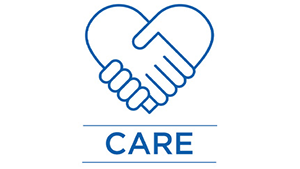Ensuring safety for children and youth in high-risk areas

CARE: Creating Active Responsibility and Engagement
Even with robust programs, policies, training, and thorough background screening for members and guests, youth participating in activities at your facility remain vulnerable to abuse. It is crucial that your staff and volunteers remain vigilant to ensure the safety of youth within the building, during offsite programs, overnight trips, transportation, and especially in high-risk areas. These high-risk areas can include locker rooms, shared bathrooms, blind spots on playgrounds, pool houses, times of transition, and any youth-centered activities.
Listed below are reminders of key protection initiatives:
Upholding the Code of Conduct
Staff, members, volunteers, and guests must adhere to the Code of Conduct. Beyond the initial presentation of policies and training, prominently display signage with appropriate conduct at entrances and in high-risk locations. Additionally, it should be reviewed on an ongoing basis. Incorporating role-playing and scenarios into these reviews will help reinforce the expected behaviors and the appropriate actions to take in case of violations.
Creating a safe environment through vigilant supervision and monitoring
Supervision is your best defense against incidents of abuse, neglect, and molestation. Conduct thorough screening of staff, volunteers, and members; maintain proper staffing ratios, and provide comprehensive training to your staff and volunteers. Implement regular supervision and monitoring of staff and volunteers. This can include scheduled check-ins, performance reviews, and unannounced visits to program sites. Your goal should be to create an environment where it is extremely difficult for anyone to cause harm to others in your organization. Ensure that this commitment to safety is consistently communicated, visibly reinforced, and actively practiced every day.
Parental education and accountability for supervision
Parents and guardians must adhere to your supervision policies to ensure their children are properly supervised and be held accountable when they do not comply. Educate them that allowing children in their care to "practice" independence by being out of sight and on their own is not appropriate nor allowed. Children are not developmentally ready for this level of responsibility and lack the awareness to protect themselves. Employees should ensure that parents and guardians follow the policies they agreed to upon joining your organization and help them understand that these policies are in place for their child's safety. The younger that children are allowed without parental supervision, the more supervision and staffing need to be increased.
Optimal supervision strategies for high-risk areas
For high-risk areas such as locker rooms and pool houses, the ideal scenario is to have full-time staff supervision. While this might seem challenging, this staff member can also oversee general safety, identify and correct slip and fall hazards, and address housekeeping issues. Slips and falls are common and significant risks in these locations. Having a dedicated staff member on site to manage and control these exposures is highly beneficial. However, the primary task remains to provide targeted, effective supervision and maintain a commanding presence.
CARE: Creating Active Responsibility and Engagement
Nationwide Risk Management & Client Services has created a CARE flyer which reinforces ways to reduce the potential for abuse within your organization. Display this flyer prominently to ensure that staff, volunteers, and visitors are aware of these important safety measures. This reinforces your organization's commitment to safety and offers important guidelines on abuse prevention, encouraging vigilance and accountability throughout the facility.
Creating: Build a culture and environment of vigilance and safety. Your vigilance can prevent potential issues before they arise.
Active: Conduct regular and unannounced walkthrough observations.
Responsibility: Trust your instincts and act if something feels off. If you see something, say something. Uphold the Code of Conduct.
Engagement: Proactively safeguard children within your youth programs and facility. Educate parents and guardians about supervision policies and hold them accountable.
Steps you can take
- Perform regular and unannounced walkthroughs observations to protect individuals and improve supervision. Delegate these observations to different leaders to ensure that the responsibility for inspections is shared and not placed on a single individual.
- Know what Action looks like. Train staff to recognize the importance of paying attention to details, subtle clues, and body language. Just as a lifeguard scans, identifies, and responds to potential dangers, this same vigilant mindset should be applied during these checks to prevent abuse and ensure proper supervision.
- Trust your instincts; if something feels off, do not assume everything is "probably okay." Maintain the mindset of "If You See Something, Say Something”. Take responsibility to ensure your staff and volunteers are consistently trained on your organization's reporting procedures, both internal and external.
- Send a visual message. Be alert and be authoritative. This does not mean you have to be unkind or impolite, it just means you are a caring adult who wants to do all you can to protect children.
Additional strategies to consider
- Make sure every program has specific staff-to-youth ratios, even if not mandated by external regulations. Clearly communicate these ratios to staff and ensure they are consistently upheld.
- Consider increasing the minimum age at which youth can participate in activities without supervision or restrictions.
- Ensure all activities, including transitions and free periods, are well supervised and structured to prevent abuse.
- Clearly designate off-limit areas and ensure doors to closets, mechanical rooms, and similar spaces remain locked and secured.
- In member, staff and volunteer areas, post signs that say, "If you see something, say something."
Prioritizing and implementing these strategies is essential for creating a safe and secure environment for children and youth. By maintaining vigilance, fostering a culture of responsibility, and demonstrating a strong commitment to child protection, you help safeguard the well-being of children and youth in your programs. Your dedication to these practices can not only help prevent abuse but also builds a foundation of trust and safety that benefits everyone involved.
Other resources
- Praesidium: Managing High Risk Locations and Activities
- American Camp Association: Supervision as a Line of Defense
- Praesidium: 8 High-Risk Activities for Day Camps and Overnight Camps
